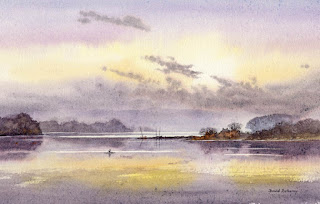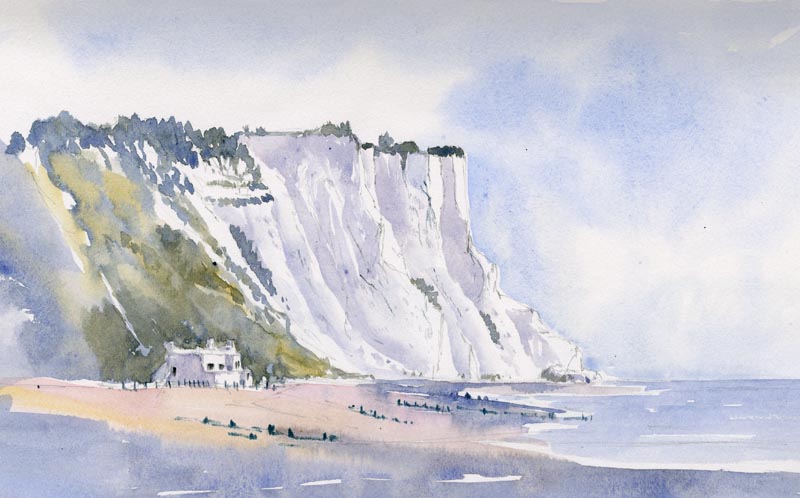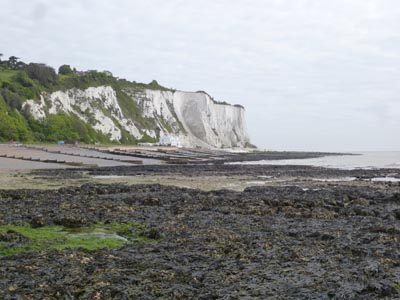Injecting mood into a landscape painting not only makes the overall effect much more exciting, but can create a strong sense of space and distance in the work. Although this scene of Faversham Creek in Kent already had a feeling of great space I wanted to exaggerate the atmosphere even more in the finished painting.
 I chose a blue-grey tinted paper for this watercolour and deliberately kept the distant wooded hillsides very faint in order to create a striking contrast with the foreground features. The strong tones on and around the buildings help to push the faint hills well into the background. If everything is given the same degree of tonal strength then it will be hard to distinguish various features from each other, even with contrasting colours. Masts, gulls and some white boats were rendered in white gouache, and I have only included the main part of the composition so that the distant hills can be seen better.
I chose a blue-grey tinted paper for this watercolour and deliberately kept the distant wooded hillsides very faint in order to create a striking contrast with the foreground features. The strong tones on and around the buildings help to push the faint hills well into the background. If everything is given the same degree of tonal strength then it will be hard to distinguish various features from each other, even with contrasting colours. Masts, gulls and some white boats were rendered in white gouache, and I have only included the main part of the composition so that the distant hills can be seen better.
I shall be giving another of my annual seminars at the Settlement, Pontypool on Saturday 1st October, and it will be covering how to create mood and drama in a painting, beginning with a watercolour demonstration, and this will be followed by an illustrated talk on the subject, including a great many examples of different landscapes and coastal scenes. You can find details on my website http://www.davidbellamy.co.uk/seminar-pontypool-october-2016/ I shall be demonstrating the exciting Daniel Smith watercolours and Saunders Waterford paper, and there will be plenty of time for you to ask any questions, so I hope to see you there.





